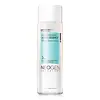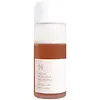What's inside
What's inside
 Key Ingredients
Key Ingredients

 Benefits
Benefits

 Ingredients Side-by-side
Ingredients Side-by-side

Bifida Ferment Lysate
Skin ConditioningSaccharomyces Ferment Filtrate
HumectantBetula Platyphylla Japonica Juice
Skin ConditioningRice Ferment Filtrate
Skin ConditioningAspergillus Ferment
Skin ConditioningGlycerin
HumectantDipropylene Glycol
HumectantMethyl Gluceth-20
HumectantWater
Skin ConditioningBetaine
HumectantCamellia Sinensis Leaf Extract
AntimicrobialEthylhexylglycerin
Skin ConditioningTrehalose
HumectantLactobacillus
Skin ConditioningPEG-60 Hydrogenated Castor Oil
EmulsifyingCaprylyl Glycol
EmollientTrideceth-10
CleansingAcrylates/C10-30 Alkyl Acrylate Crosspolymer
Emulsion StabilisingTromethamine
Buffering1,2-Hexanediol
Skin ConditioningTropolone
Skin ConditioningAllantoin
Skin ConditioningButylene Glycol
HumectantCoptis Japonica Extract
AntimicrobialArginine
MaskingHydroxypropyl Methylcellulose
Emulsion StabilisingHydrogenated Lecithin
EmulsifyingCI 77220
Cosmetic ColorantSodium Hyaluronate
HumectantAdenosine
Skin ConditioningNiacinamide
SmoothingDextrin
AbsorbentGlycine
BufferingSerine
MaskingGlutamic Acid
HumectantAspartic Acid
MaskingLeucine
Skin ConditioningAlanine
MaskingLysine
Skin ConditioningTyrosine
MaskingPhenylalanine
MaskingProline
Skin ConditioningThreonine
Valine
MaskingIsoleucine
Skin ConditioningPhenoxyethanol
PreservativeHistidine
HumectantMethionine
Skin ConditioningCysteine
AntioxidantBifida Ferment Lysate, Saccharomyces Ferment Filtrate, Betula Platyphylla Japonica Juice, Rice Ferment Filtrate, Aspergillus Ferment, Glycerin, Dipropylene Glycol, Methyl Gluceth-20, Water, Betaine, Camellia Sinensis Leaf Extract, Ethylhexylglycerin, Trehalose, Lactobacillus, PEG-60 Hydrogenated Castor Oil, Caprylyl Glycol, Trideceth-10, Acrylates/C10-30 Alkyl Acrylate Crosspolymer, Tromethamine, 1,2-Hexanediol, Tropolone, Allantoin, Butylene Glycol, Coptis Japonica Extract, Arginine, Hydroxypropyl Methylcellulose, Hydrogenated Lecithin, CI 77220, Sodium Hyaluronate, Adenosine, Niacinamide, Dextrin, Glycine, Serine, Glutamic Acid, Aspartic Acid, Leucine, Alanine, Lysine, Tyrosine, Phenylalanine, Proline, Threonine, Valine, Isoleucine, Phenoxyethanol, Histidine, Methionine, Cysteine
Water
Skin ConditioningTriethylhexanoin
MaskingHydrogenated Poly(C6-14 Olefin)
Emollient1,2-Hexanediol
Skin ConditioningMethylpropanediol
SolventButylene Glycol
HumectantGlycerin
HumectantTrilaureth-4 Phosphate
EmulsifyingCamellia Sinensis Leaf Extract
AntimicrobialSaccharomyces Ferment Filtrate
HumectantCamellia Sinensis Leaf Water
MaskingHelianthus Annuus Seed Oil Unsaponifiables
EmollientPolyquaternium-51
Skin ConditioningSodium Hyaluronate
HumectantEthylhexylglycerin
Skin ConditioningHydrogenated Lecithin
EmulsifyingDextrin
AbsorbentTheobroma Cacao Seed Extract
AntioxidantCentella Asiatica Extract
CleansingFicus Carica Fruit Extract
HumectantSchisandra Chinensis Fruit Extract
Skin ConditioningAmaranthus Caudatus Seed Extract
Skin ConditioningUlmus Davidiana Root Extract
Skin ConditioningCeramide NP
Skin ConditioningTocopherol
AntioxidantWater, Triethylhexanoin, Hydrogenated Poly(C6-14 Olefin), 1,2-Hexanediol, Methylpropanediol, Butylene Glycol, Glycerin, Trilaureth-4 Phosphate, Camellia Sinensis Leaf Extract, Saccharomyces Ferment Filtrate, Camellia Sinensis Leaf Water, Helianthus Annuus Seed Oil Unsaponifiables, Polyquaternium-51, Sodium Hyaluronate, Ethylhexylglycerin, Hydrogenated Lecithin, Dextrin, Theobroma Cacao Seed Extract, Centella Asiatica Extract, Ficus Carica Fruit Extract, Schisandra Chinensis Fruit Extract, Amaranthus Caudatus Seed Extract, Ulmus Davidiana Root Extract, Ceramide NP, Tocopherol
 Reviews
Reviews

Ingredients Explained
These ingredients are found in both products.
Ingredients higher up in an ingredient list are typically present in a larger amount.
1,2-Hexanediol is a synthetic liquid and another multi-functional powerhouse.
It is a:
- Humectant, drawing moisture into the skin
- Emollient, helping to soften skin
- Solvent, dispersing and stabilizing formulas
- Preservative booster, enhancing the antimicrobial activity of other preservatives
Butylene Glycol (or BG) is used within cosmetic products for a few different reasons:
Overall, Butylene Glycol is a safe and well-rounded ingredient that works well with other ingredients.
Though this ingredient works well with most skin types, some people with sensitive skin may experience a reaction such as allergic rashes, closed comedones, or itchiness.
Learn more about Butylene GlycolCamellia Sinensis Leaf Extract is derived from the leaves of the tea plant. Black tea, green tea, and oolong tea are all harvested from this plant.
This ingredient has many skin benefits:
This ingredient contains polyphenols, a strong antioxidant. Antioxidants help fight off molecules that damage skin cells.
On top of that, the antioxidants in green tea neutralize free-radicals from the sun. This gives the skin some extra UV protection, but should not replace sunscreen.
Many components of tea have anti-inflammatory properties.
Polyphenols and L-theanine help soothe the skin and reduce irritation. The caffeine in Camellia Sinensis Leaf Extract helps calm inflamed blood vessels.
Other compounds found in tea include: Vitamin Bs, linoleic acid, magnesium, calcium, iron, and zinc.
Research has shown both drinking Camellia Sinensis Leaf Tea and applying it to the skin can help boost skin elasticity and hydration. Studies also show using tea extract may reduce sebum, or oil, production.
Learn more about Camellia Sinensis Leaf ExtractDextrin is used to thicken a product and helps bind ingredients together. It is created from starch and glycogen.
As an emulsifier, dextrin prevents ingredients from separating. This helps elongate a product's shelf life.
Studies show coating UV filters with dextrin prevents these ingredients from being absorbed. This helps UV ingredients last longer on the skin.
Learn more about DextrinEthylhexylglycerin (we can't pronounce this either) is commonly used as a preservative and skin softener. It is derived from glyceryl.
You might see Ethylhexylglycerin often paired with other preservatives such as phenoxyethanol. Ethylhexylglycerin has been found to increase the effectiveness of these other preservatives.
Glycerin is already naturally found in your skin. It helps moisturize and protect your skin.
A study from 2016 found glycerin to be more effective as a humectant than AHAs and hyaluronic acid.
As a humectant, it helps the skin stay hydrated by pulling moisture to your skin. The low molecular weight of glycerin allows it to pull moisture into the deeper layers of your skin.
Hydrated skin improves your skin barrier; Your skin barrier helps protect against irritants and bacteria.
Glycerin has also been found to have antimicrobial and antiviral properties. Due to these properties, glycerin is often used in wound and burn treatments.
In cosmetics, glycerin is usually derived from plants such as soybean or palm. However, it can also be sourced from animals, such as tallow or animal fat.
This ingredient is organic, colorless, odorless, and non-toxic.
Glycerin is the name for this ingredient in American English. British English uses Glycerol/Glycerine.
Learn more about GlycerinHydrogenated Lecithin is created from the hydrogenation of lecithin (a group of phospholipids). Hydrogenation is a chemical reaction between hydrogen and another element.
This ingredient is an emollient and emulsifier. As an emollient, it helps soften skin by trapping moisture within. As an emulsifier, it prevents oil and water ingredients from separating.
Saccharomyces Ferment Filtrate is created from fermenting Saccharomyces, a yeast also known as baker's yeast or brewer's yeast.
As a humectant, Saccharomyces Ferment Filtrate helps draw moisture from the air to your skin to keep your skin hydrated. The humectant properties comes from its beta-glucan content.
Sodium Hyaluronate is hyaluronic acid's salt form. It is commonly derived from the sodium salt of hyaluronic acid.
Like hyaluronic acid, it is great at holding water and acts as a humectant. This makes it a great skin hydrating ingredient.
Sodium Hyaluronate is naturally occurring in our bodies and is mostly found in eye fluid and joints.
These are some other common types of Hyaluronic Acid:
Learn more about Sodium HyaluronateWater. It's the most common cosmetic ingredient of all. You'll usually see it at the top of ingredient lists, meaning that it makes up the largest part of the product.
So why is it so popular? Water most often acts as a solvent - this means that it helps dissolve other ingredients into the formulation.
You'll also recognize water as that liquid we all need to stay alive. If you see this, drink a glass of water. Stay hydrated!
Learn more about Water